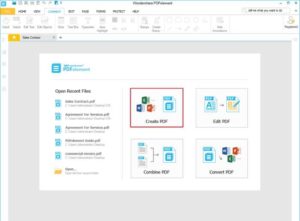Raising the Ethical Bar: What Is Bias in Data Annotation
Humans have biases. And just like a mirror, AI can reflect these biases too. Why? Because AI systems learn from data that’s labeled by us, humans. Now, you might be wondering what labeling data means. In the field of machine learning, computers make decisions based on data. For these machines to learn, they need this data to be annotated.
Simply put, data annotation is like teaching a child by pointing and naming things. For example, showing a machine lots of pictures of cats and telling it, ‘These are cats.’ This is how machines start recognizing cats. But what if we only show it pictures of black cats? Then, it might struggle to recognize white cats, thinking they’re not cats. This is how bias creeps into machine learning.
So, as we delve into this article, we’ll focus on how we can make machine learning models fair by avoiding these pitfalls. How can we train our machines not just to be ‘smart’, but also to be ‘moral’? Let’s uncover that!
Understanding Ethics in Data Annotation
The fact that approximately two-thirds of executives acknowledge the presence of data bias in their organizations should not be taken lightly. In the era where decisions are data-driven, bias can compromise the quality of outcomes. To put it in perspective, our requirement for clean, unbiased data to build efficient machine learning systems is fundamental. Like we need clean water for good health, we also need clean, fair data to make machine learning systems work well.
Now, here’s the tricky part. Biases in machine learning can creep into data annotation, either or unintentionally. We might pick data without knowing it’s not diverse, or choose data that tells a certain story on purpose. Either way, the result is the same: an AI model that sees the world in a biased way, leading to unfair choices
Remember, when you’re annotating data for machine learning, you’re feeding systems a certain worldview. Hence, it’s important that a true representation of the world is a must to develop fair AI systems.
The Real-World Consequences of Biased Machine Learning
Data bias isn’t a mere theoretical concern. It has tangible consequences that can manifest in sometimes surprising ways. To give you a clearer perspective, here are several real-world cases that illustrate biased machine learning:
- The Ball or the Bald: A hilarious yet instructive incident took place during a soccer match in Scotland. An AI-powered camera was used to automatically track the ball. Unfortunately, the camera mistook a linesman’s bald head for the ball, so the viewers were watching the linesman instead of the match. It’s a clear case of selection bias resulting from improper data annotation.
- The Bias of Amazon’s AI Recruitment Tool: Amazon experienced firsthand the perils of biased data when their AI recruitment tool systematically disadvantaged female applicants. This happened because the tool was trained on mostly male resumes submitted over a 10-year period. Consequently, the AI developed a preference for a certain pattern.
- Galactica and Bias: Meta AI’s large language model, Galactica, was released with the potential to assist scientists. However, it quickly became clear that the model could be exploited to generate biased and misleading content. Despite a pre-release bias evaluation, this led to Meta pausing the demo 48 hours after release.
- Insensitive Content Generation: Customers of KFC in Germany received a highly inappropriate push notification via mobile app. KFC blamed the mishap on a failed internal review process for their semi-automatic content generation.
- Algorithmic House Pricing Gone Wrong: Zillow tried to get into quick house buying and selling. But their tool for pricing homes couldn’t deal with changing house prices. They ended up losing a lot of money.
- Biased Hiring Practices: Estée Lauder, a cosmetics company, used HireVue’s automated hiring software. But it ended up wrongly firing three make-up artists. The process was hard to understand, and they stopped using the software because of it.
These incidents aren’t isolated. They signify a larger issue that extends beyond individual companies. These examples show the big effects data bias in machine learning can have. It can lead to wrong results and serious ethical issues. So, when we annotate data, we need to know about these risks and commit to fair and unbiased practices.
Ethical Considerations for Fair Data Annotation
Now that we’ve discussed what data bias is and why it matters, let’s move on to the proactive steps we can take to make data annotation fairer. The good news? Several methods can help us cut bias and promote ethical practices.
Firstly, we should ensure diversity within annotation teams. This reduces the risk of a singular, possibly biased perspective dominating our data. Here’s a data annotation service provider that leverages a global workforce. Their team includes annotators from various cultural backgrounds, skin tones, and nationalities. This diversity contributes to a broader, more inclusive understanding of data.
Clear guidelines for annotation are another critical measure. Annotators should have unambiguous instructions that leave little room for personal biases. Think of it as a map, guiding them through the landscape of data without getting sidetracked by their preconceptions.
The implementation of audit trails is also significant. This transparency allows us to trace back through the annotation process and identify if and where biases may have crept in. It’s like having a breadcrumb trail in a forest: we can find our way back and correct our course if we’ve strayed.
Lastly, continuous training is essential. Bias is not a static issue. As society evolves, so do our biases. Regular training ensures that our annotators stay updated on current ethical considerations. So, it helps them navigate the ever-changing terrain of data ethics.
We can train our machines with data that represents the complex world we live in.
Conclusion

Photo by Scott Graham on Unsplash
As we wrap up, let’s pause to reflect on the core idea here: data bias can lead to consequences that go beyond broken algorithms. To counter bias, we must diversify our annotation teams, develop clear guidelines, and commit to ongoing training. We must prioritize not just the intelligence, but the ethics of our AI systems.
Remember, AI is only as good as the data it learns from. So, we should ensure it learns from the best — fair, unbiased, and representative data. After all, we’re not building machines. We’re shaping the future. And it’s going to be a future all us will be proud of.








